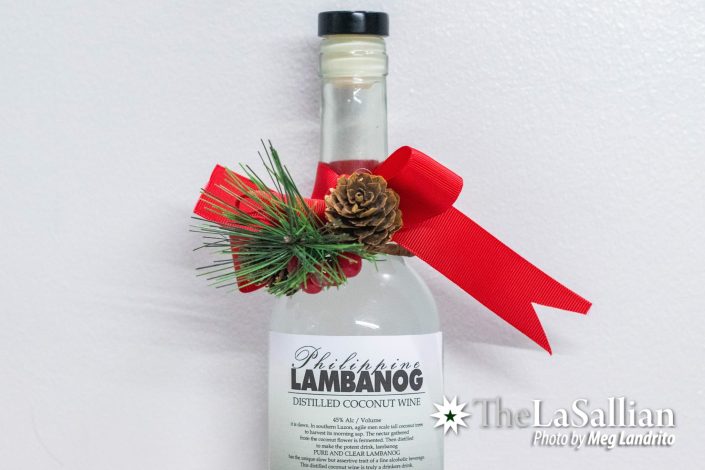Since the Neolithic period, alcohol has been widely regarded as one of the most common substances ingested by humans, serving as a bonding ritual, morale booster, and stress reliever within communities. In the Philippines, producing and drinking alcoholic beverages has been part of its tradition and culture even before the Spanish colonial period.
One of the staple alcoholic beverages in the country is lambanog, a type of wine derived from the sap of coconut trees. Commonly made in the provinces of Laguna, Batangas, and Quezon, it is present in many festivities. But despite the popularity of lambanog, research regarding its chemical composition and characteristics has been severely lacking. Recent controversies have also cast doubts on its safety and effects on human health.

Chemicals in a toast
Both the positive and negative characteristics of lambanog can be linked to its chemical makeup. Dr. Cynthia Grace Gregorio, an associate professor of Chemistry at the University of the Philippines Diliman, elaborates on this point by explaining the key stages behind the production of lambanog: the fermentation and distillation processes.
The fermentation process starts with the collection of fresh sap from a palm tree, which will be done by a mangangarit or coconut farmer. The coconut sample will then be put in a container called a tukil so it can ferment for three to four days. To separate the alcohol from other components in the mixture, the sample undergoes distillation at 90 degrees centigrade which will produce the bating—the first distillate in the process that is composed of miniscule quantities of methyl alcohol.
Trace amounts of methyl alcohol can be found in fruits and other alcoholic beverages. While it is not inherently toxic, Gregorio explains that high amounts of methyl alcohol can be converted into dangerous compounds in the body, such as formaldehyde and formic acid. These compounds may cause blindness and even death. Moreover, she posits that isoamyl alcohol and isobutyl alcohol—two other substances formed during the fermentation and distillation processes—should be kept at low concentrations to avoid muddying the flavor profile of lambanog.
Other organic compounds that contribute to the properties of lambanog include ethyl alcohol and ethyl acetate. Through her research, Gregorio reports that lambanog is composed of 35.69 percent ethyl alcohol in terms of volume, which causes intoxication. Meanwhile, ethyl acetate is responsible for producing the beverage’s distinctive fruity and flowery aroma and taste.
A shortcoming recognized
“Alcohol should be consumed in moderation,” Gregorio stresses. When drinking gets out of control, she explains that this changes the brain circuitry of a person, increasing their craving for alcoholic substances and potentially leading them down a dangerous path toward addiction.
As regulated by the Food and Drug Administration (FDA), the alcohol content of lambanog should be 40 percent at most. The Philippine National Standards for lambanog also prescribed that its acetic acid composition should not exceed 0.3 percent. Additionally, its methyl alcohol content should not be increased artificially; it must only be derived from its fermentation process.
Regardless of these regulations, the FDA still fails to implement them nationwide. In December 2019, the agency recorded 11 deaths and 300 cases of hospitalizations in Laguna and Quezon due to alcohol poisoning. Analysis of the victims’ drinks showed that they contained 11.4 to 18.2 percent methyl alcohol—significantly exceeding the typical concentration naturally occurring during fermentation. Gregorio supposes this was likely added by the manufacturers to hasten the aging process of lambanog so that they could sell more of the product at a lower price.
Apart from this, the FDA also overlooks the operational limitations of many small and traditional lambanog producers. Gregorio states, “Many legitimate lambanog makers are small lambanog makers that cannot comply with FDA requirements when applying for a license because their facilities are artisanal in nature, and the FDA has stipulated many conditions that require modern equipment.” As a result, large corporations are often the only ones that can acquire these licenses.
She also urges lambanog manufacturers to avoid manipulating the amount of organic compounds in their products.
Like every other alcoholic beverage, lambanog poses several health risks to people. But as long as it is produced ethically and consumed in moderation, it is safe and flavorful, best for every joyous festivities. Rather than abstaining from drinking alcoholic beverages, Gregorio believes that it is more important to research and spread awareness on the proper means of creating lambanog, its chemical composition, and moderate alcohol consumption. “It is about time that we put more interest in our own alcoholic beverages,” she adds.
